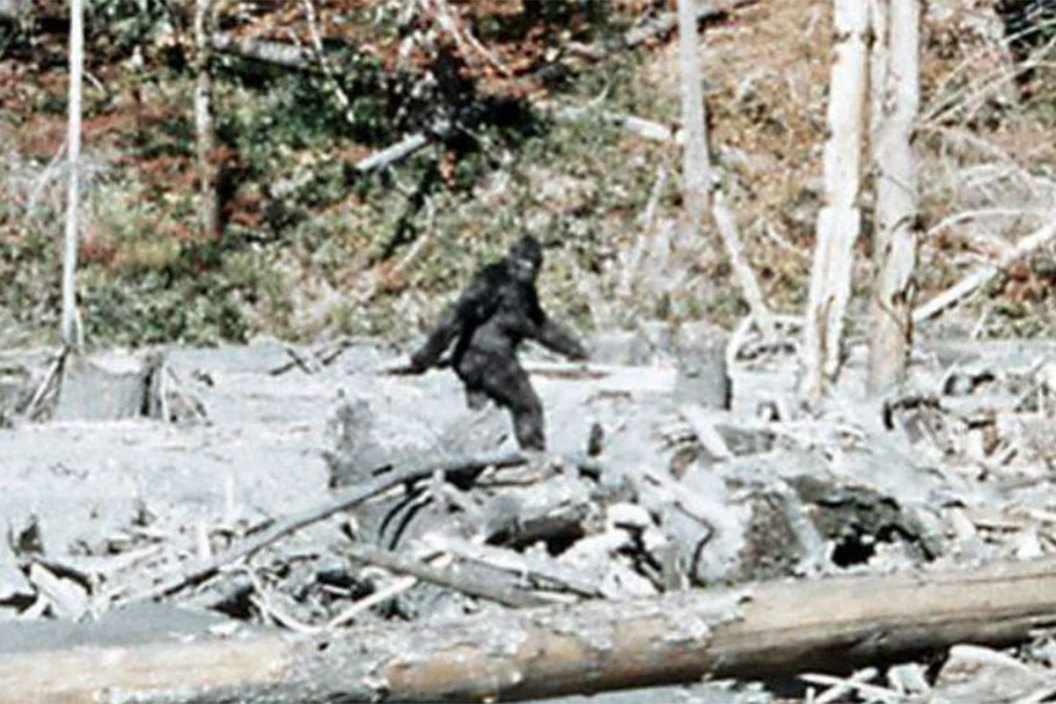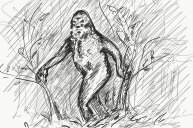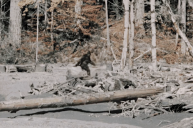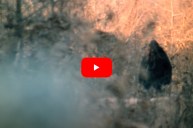These hairy monster legends may actually have a hint of truth to them.
The legend of Bigfoot is certainly a piece of North American culture, and it shows no signs of slowing down anytime soon. Does this legendary man-like beast really exist?
We don't actually know. It seems compelling arguments can be made both for and against the creature known to Native Americans as "Sasquatch."
What's interesting is these legends aren't limited to just the Pacific Northwest forests of Northern California, Oregon, Washington, and British Columbia, Canada. Nope, eyewitness sightings of ape-like-creatures and giant mysterious footprint discoveries are a global phenomenon.
To prove it, here are five Bigfoot-type legends from around the world. Many of these come from some of the most remote regions of the globe. These creatures aren't as well-known as the Sasquatch of North American lore, but the stories may actually have a hint of truth to them.
1. The Yeren, China
There are actually quite a few Bigfoot-like legends all across Asia. But the most well-known one is more popularly referred to as "The Chinese Wildman," and sightings of the creature seem to be going up. One thing that makes this legend credible is the remote location of the nearly 400 reported sightings which stretch back to the early part of the 20th century.
Much like Sasquatch, the beast has been reported to walk upright on two legs. It is thought to be around the same size as a man at six feet tall. And of course, it is reported to be covered in long hair, often a reddish-brown color. The majority of Yeren sightings come from the remote Shennongia Nature Reserve, where this "hairy man" has been spotted by hunters, tourists, and even park rangers.
The thing that makes the Yeren legend so compelling is the proximity of the sightings to fossil discoveries of Gigantopithecus. This gigantic prehistoric ape lived throughout China, Indonesia, and Vietnam and stood almost 10 feet tall. Scientists believe Gigantopithecus is extinct. But it sure is hard to not draw comparisons between the legendary Yeren and a real-life giant ape we know inhabited the area, even if scientists believe the last Gigatopithecus died out some 100,000 years ago.
2. Orang Pendek, Indonesia
Many people in the United States are skeptical of the existence of Bigfoot. That's understandable. It's hard to believe a giant, hairy beast has gone undetected for so long in North America. While many Bigfoot stories read like tall tales, Sumatra's Orang Pendek seems much more grounded in reality.
The name translates to "short person." The majority of the sightings come from the extremely remote and hard-to-reach Kerinci Seblat National Park.
Orang Pendek is described as an herbivore growing three to five feet tall with grey or black hair. It's often seen in trees and has long arms and short legs. If you think the description sounds a lot like an orangutan or chimpanzee, you aren't alone.
Sumatra residents claim the Orang Pendek is unusually strong and likes to swipe crops from farmer's fields. It is even reported this wild man has a very distinctive vocalization. One thing that makes this creature's eyewitness testimony so intriguing is the fact many sightings have been reported by actual scientists. Several of them claim the animal they saw was definitely a previously -unknown primate.
Many expeditions have headed to remote parts of the Indonesian jungle in search of this creature. Unfortunately, trail camera use has turned up no photos of the beast. So far the best evidence we have are some large footprints and handprints. In another striking similarity to modern-day apes, the footprints are said to feature a divergent toe.
But there is another really interesting wrinkle that may lend even more credibility to the Orang Pendek. In 2004, the remains of an ancient, three-foot tall creature with both human and ape characteristics known as Homo floresiensis was discovered on another nearby Indonesian island called Flores. This creature walked the earth as recently as 50,000 years ago.
Does this mean the Orang Pendek could be a population of Homo floresiensis that survived to the present day? We're not sure. But if we had to bet money on a Bigfoot legend being proven true eventually, we'd bet on the Orang Pendek over most others.
3. Mapinguary, Brazil
South America is home to a bevy of different wildlife species and large portions of Brazil are completely unexplored. That's why the stories of the Mapinguary are so intriguing. Much like Bigfoot, it is also said to give off a foul odor and has a piercing scream. One of the more chilling tales of this creature claims one killed over 100 cows in a three-week period back in 1937. But it is only supposed to be dangerous to humans if approached.
One thing that isn't consistent is the descriptions of the animal. Some say Mapinguary only grows to around five feet in height and has long arms and short legs, similar to the Orang-Pendek. But other accounts describe something similar to a giant ground sloth.
Some cryptozoologists tend to believe more in the latter description than the former because giant ground sloths did indeed inhabit the Amazon in the past. Even if this creature was a giant ground sloth, it would be a major scientific discovery since they are thought to be extinct.
The tales of the Mapinguary get even crazier if you dive into the local folklore. Some reports claim the creature has a second mouth in the middle of its stomach. Others claim the creature has only a single eye in the middle of its head like a cyclops.
Skeptics say these descriptions point towards a more mythological than zoological creature, especially since some tales are cautionary. Some claim the creature will only attack if you aren't respecting the forest.
Whatever the case may be, there are hundreds of people who have claimed to see the beast over the years. They must be seeing something unusual down there.
4. Yowie, Australia
The Land Down Under has their own Bigfoot legend, but this creature is known more popularly as the "Yowie." It is sometimes also referred to as "Yahoo." Just like how Sasquatch can be found in Native American legend, the Yowie can be found in Aboriginal lore.
Most of the sightings are centered in the southern regions of Queensland and New South Wales, but sightings of the Yowie have been reported all over Australia.
The creature is usually described as being around six feet tall, although there are reports of creatures as tall as 12 feet. It is reported to be covered in reddish-brown hair and leaves strange, four-toed footprints.
Just like Bigfoot, there is plenty of skepticism of the Yowie's existence. The one thing that may work in Yowie's favor over Bigfoot is human population differences. There are only about 25 million people living in Australia, and the country is nearly the same size as the continental United States. Simply put, it would be way easier for a Yowie to hide in the remote Australian Outback than it would be for a Sasquatch the forests of Northern California.
Also keep in mind there is still heavy debate over the Thylacine or Tasmanian Tiger in Australia and New Zealand. This unusual marsupial was thought to have been hunted into extinction in the early 20th century, but sightings and even alleged photos of the animal persist to this day.
If the Thylacine has been able to survive into the 21st century unknown to science, who's to say the Yowie couldn't have done the same?
5. The Yeti, Nepal
The only giant legendary ape perhaps more famous than Bigfoot is the Yeti. Reports of this beast stretch back thousands of years among the locals. But the Yeti became world famous when reports first trickled out of the Himalayas in books in the late 1800s and early 1900s. It really took off when the creature was given its other nickname: "The Abominable Snowman."
In 1953, Sir Edmund Hillary and Tenzig Norgay claimed to have spotted Yeti tracks during their famous first summit of Mount Everest. Hillary was so intrigued by the legend he returned on a scientific expedition years later. He managed to bring back some scalps and hair samples.
When the samples were shown to come from known animals like bears and goats, he concluded there were rational explanations for the creature. But it hasn't stopped the legend of the Yeti from persisting into the 21st century.
The remote nature of the Himalayas definitely makes tracking down such a legend a difficult task. In more recent years, some scientists are now beginning to speculate nearly all sightings can be attributed to bears. There are even a few theories it is a species of bear as of yet unknown to science. While that wouldn't be as exciting as a huge, ape-like-creature, it would definitely be huge news if a new species of bear managed to avoid humans successfully all this time.
Products featured on Wide Open Spaces are independently selected by our editors. However, when you buy something through our links, we may earn a commission.
NEXT: IS THIS BIGFOOT CAUGHT ON A TRAIL CAMERA IN NORTHERN CALIFORNIA?





